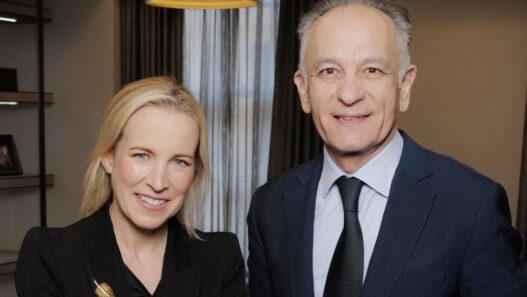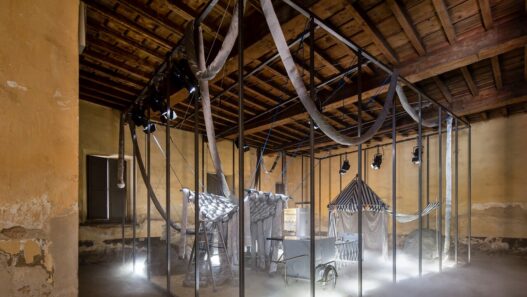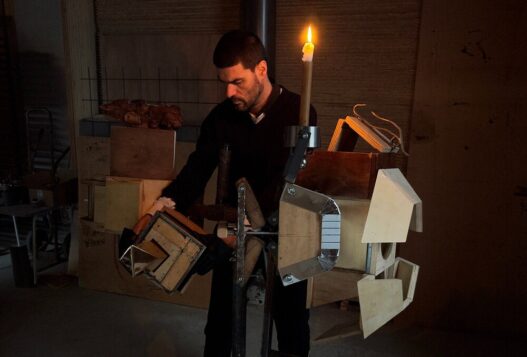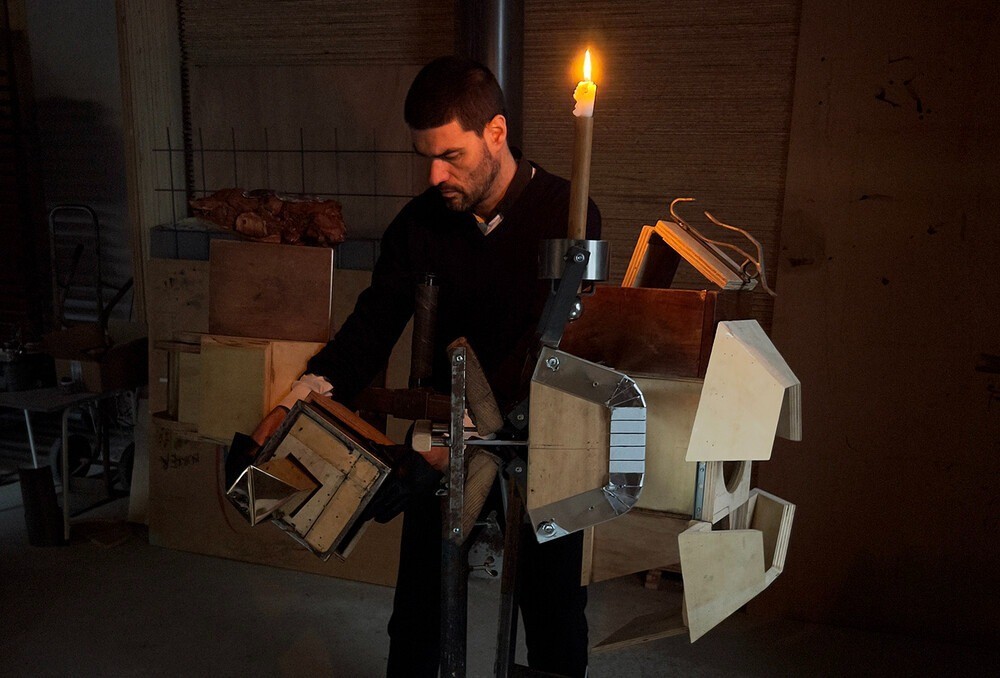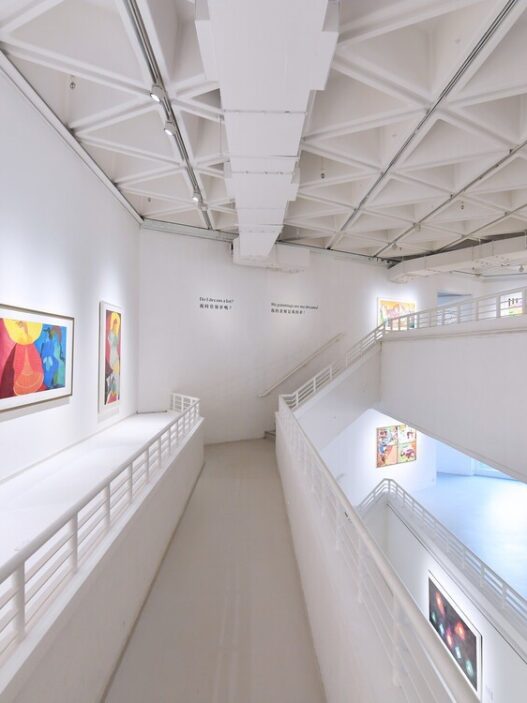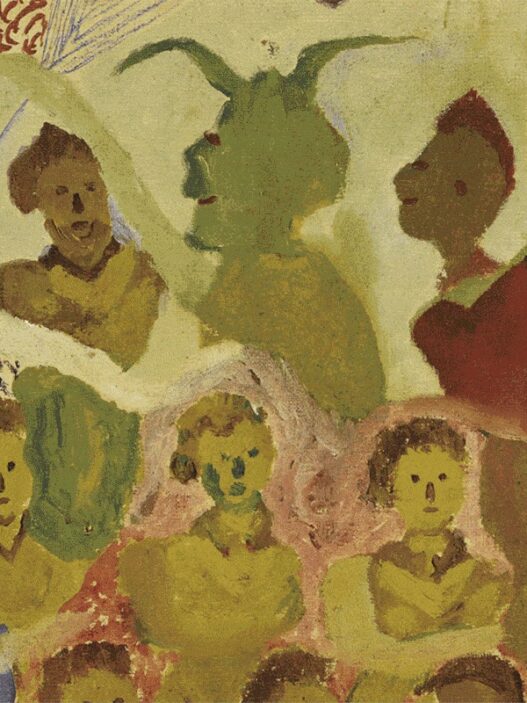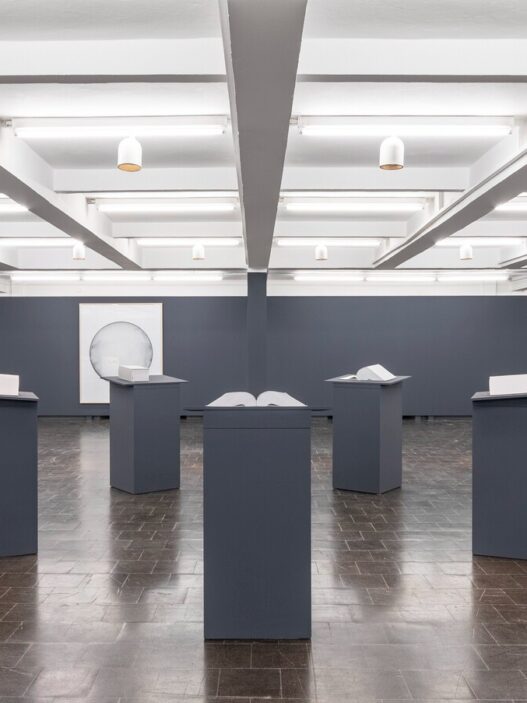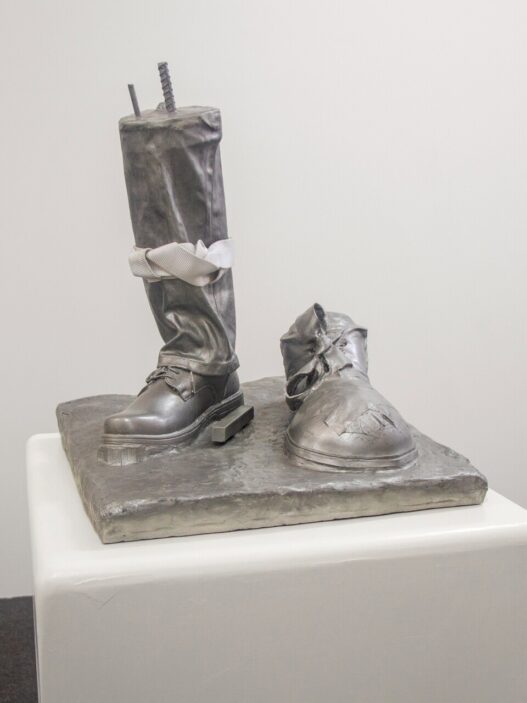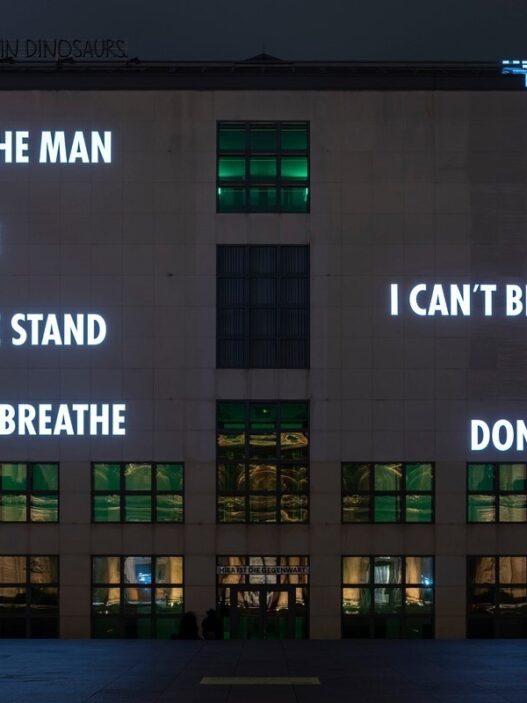Zilberman Berlin presents Pedro Gómez-Egaña: The Last Question from December 16, 2022 to February 4, 2023.
The Last Question, a solo exhibition by Pedro Gómez-Egaña, will be on display at Zilberman Berlin from December 16, 2022 until February 4, 2023.
The Last Question is an exhibition focusing on a single, ongoing performance inspired by Isaac Asimov’s eponymous science fiction story. The exhibition encourages guests to enter an intimate chamber for experiencing a live music performance on an instrument constructed by the artist. The artwork and performance are inspired by the heritage of planetariums as venues for theatrical depictions of phenomena on the verge of comprehension. The performance also draws on historical practices that draw connections between astronomy, magic, and music, such as those found in mathematician Johannes Kepler’s Harmonices Mundi (1619) or the Pythagorean Musica Universalis (6th Century BC). Pedro Gómez-Egaña will perform continually during the exhibition’s opening hours, to a score that interprets Asimov’s story.
Russian-American science fiction writer Isaac Asimov’s short story The Last Question (1956) tackles the fate of humanity and the universe as decided by degrees of energy expenditure. The ambitious plot combines philosophy, transhumanism, simulation theory, and theology together. “Can entropy, and specifically the depletion of energy sources, ever be reversed?” is the central question driving the plot. The answer appears at the end of history, when all of the universe’s energy has been deployed and consciousness and technology have combined into one being. However, the solution is not communicated verbally but rather through a mystical form of storytelling that uses noises and gestures: a demonstration.
The Last Question, as an installation, plays out an interpretation of what the story’s plot implies. To accomplish this, it employs ancient methods that imply cosmic movements are part of precise heavenly musical harmonies – a convergence of mathematics, science, and music. Examples of these traditions can be found as far back as Latin American pre-Columbian civilisations as the Muisca, Inca, or Náhuatl, as well as ancient Greece and Renaissance practices like Johannes Kepler’s book Harmonices Mundi.
Pedro Gómez-work Egaña’s is interested in investigating how technology changes and informs culture, specifically our perception of time. Whether replicating antique machines or exploring the sensation of virtual realities, the artist is interested in how our relationship to tools and gadgets, as well as the temporal cultures that arise around them, are a key topic of investigation and exploration. This has included the reproduction of ancient machines (The Chariot of Greenwich, Bergen triennial 2009), investigating imperial dimensions of standardised time (The Common Ancestor, Zilberman 2018), the sexual undertones in the temporalities of digital culture (Pleasure, 2017), or looking at practices of scientific popularisation as an encounter between science and mysticism (Object to be Destroyed, New York’s Performa biennial 2013). Gómez-Egaña’s work also reflects a concern with economies of attention.
He addresses this by building purpose-built, often large-scale immersive settings that strive to manipulate viewers’ perception. The relationship between the site and the spectator is important to his work, therefore narrative is a common tactic. He creates fiction, employs music, or appropriates literary works, all while drawing on concrete historical qualities of the location where a work is displayed.
Pedro Gómez-Egaña (1976, Colombia) lives and works in Oslo, Norway. Gómez-Egaña has developed a variety of research projects at different institutions and with partners such as the Oslo National Academy of the Arts, Goldsmiths College London, Kunstnernes Hus-Oslo, The Laban Centre-London, and Universidad Nacional de Colombia. His work has recently been shown at the 16th Lyon biennale, 15th Istanbul Biennial, Contour Biennial, Performa13-New York, Kode museum in Bergen, Yarat Contemporary in Baku, Kochi-Muziris Biennial, Marrakech Biennial, Kunstnernes Hus-Oslo, Hordaland Kunstsenter- Bergen, Brussels Biennial, South Bank Centre-London, L’appartement 22-Rabat, Galeria Vermelho-Sao Paulo, Kunsthall Mulhouse-France, Colomboscope-Sri Lanka, amongst others.
Zilberman Berlin
Goethestraße 82
10623 Berlin
Germany
www.zilbermangallery.com
Instagram / Facebook


